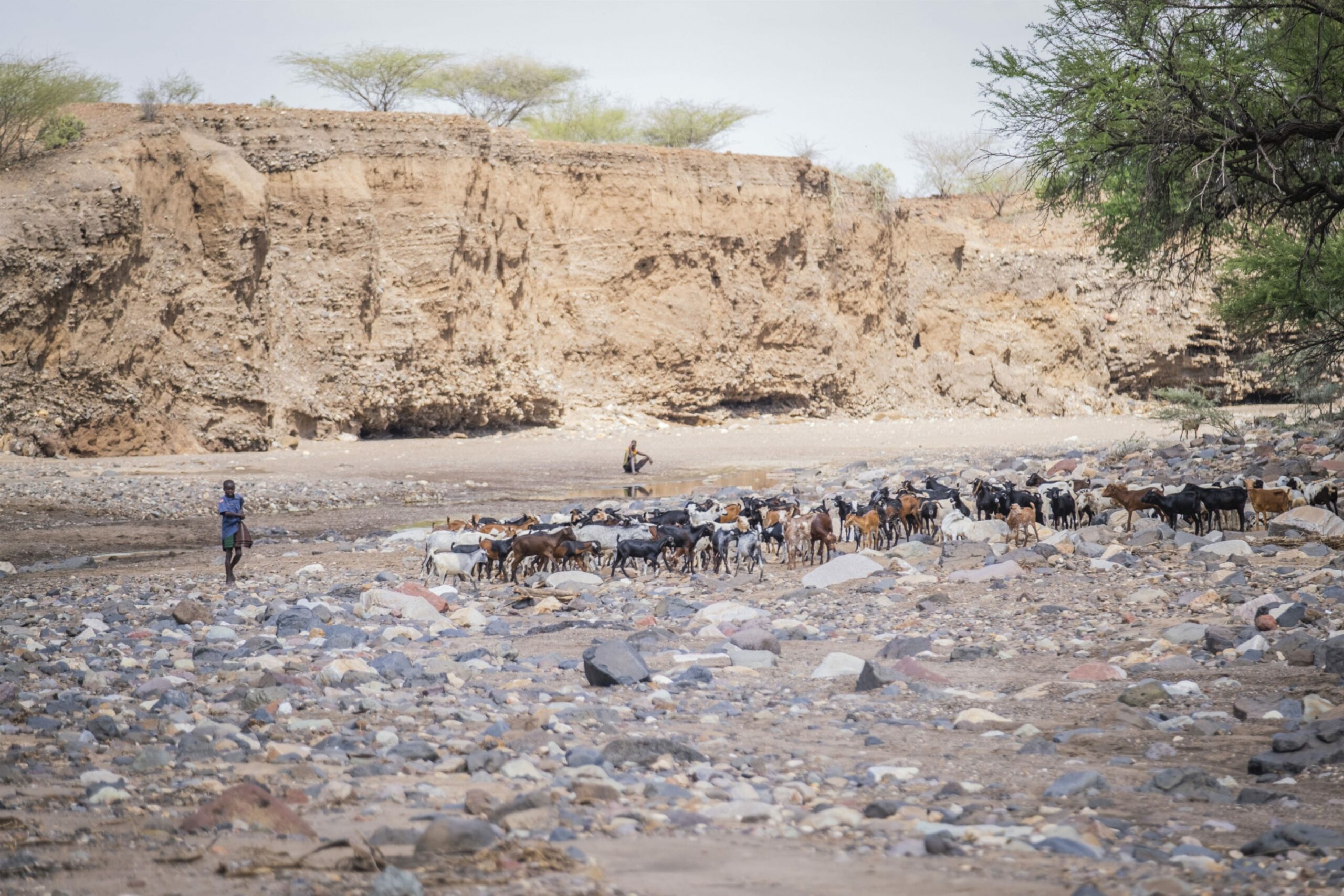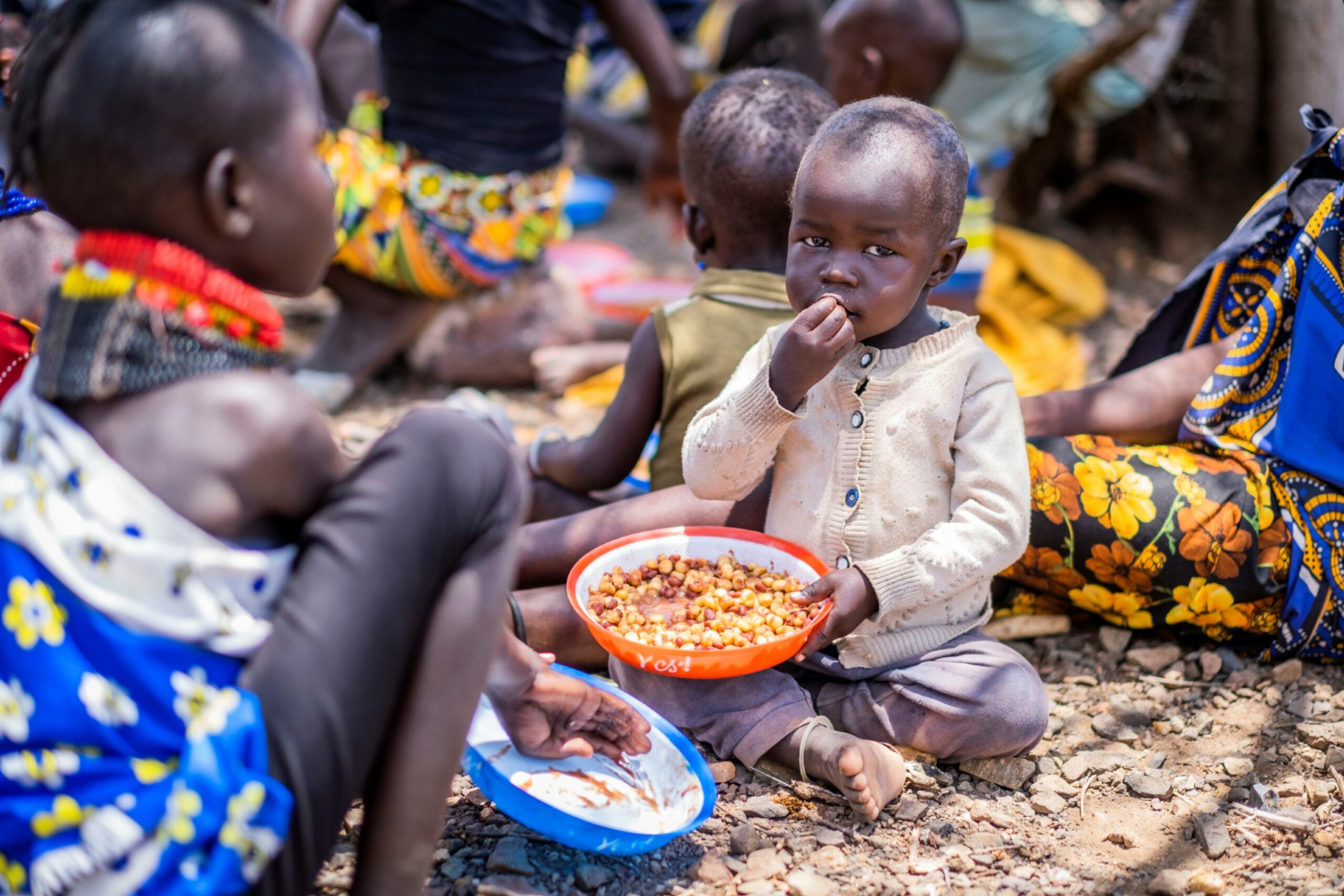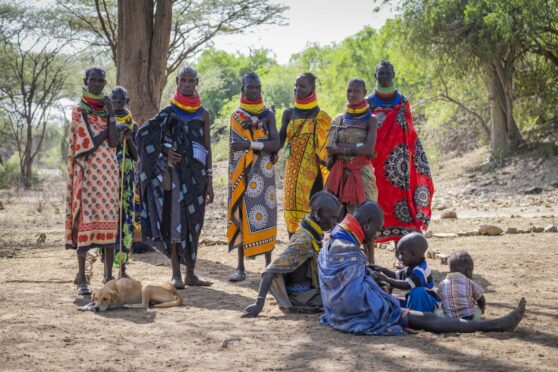
Outside her hut, Hellen Aboi sets down her tools – a large bowl and a thin metal pick – and opens her calloused hands.
“It’s hard because you have to dig and dig and dig,” she says. “You have to break down the rocks to sand then carry the sand to the river to sift it. If there is gold, you take it to a dealer and that’s when your children get to eat. If not, they sleep with no food in their stomachs.”
It is midday and the sun torments the thirsty land. Her five children, aged between 18 months and 10 years old, jostle for attention but, with her husband off searching for pasture for their few surviving goats, she must spend the rest of the day prospecting.
Loima in Turkana, in the north-west of Kenya, is no Klondike. On a good day, Hellen might find a small flake; a glint of hope in the hard, red rocks. This she can sell at 400 Kenyan shillings – around £3 – a gram. More often, however, she will return at nightfall empty-handed. Drought has driven the Horn of Africa to the brink of an unprecedented humanitarian catastrophe.
Driving north-west from the town of Lodwar on rough dirt tracks, the destruction wreaked by climate change is unmistakable; in the cracked earth, the desiccated shrubs and the vast dried-up riverbeds that cut through the terrain like ghostly desert highways.
You can see it in the weary gait of the men, their herding sticks slung across bony shoulders. And in the beads of sweat on the foreheads of the women fetching water from deep-dug wells.
The land is wind-whipped and dusty. Giant anthills form spires and pillars in a mini Monument Valley, and everywhere: scatterings of thorn-tree huts, like coconuts or moptop beehives.
In lusher regions, acacia trees – symbols of regeneration and resilience – stand like amply-laid tables under the African sky; here, stripped of foliage, they are horns of empty.
Droughts are not new to this part of Africa. The people here are used to seasons with little rain and the shortage of food that drives them to eat the fruit of the prosopis: sweet-tasting pods that cause constipation. But, as climate analysis reveals, the droughts are becoming more frequent, and lasting longer. Little rain has fallen on Loima for several years. Livestock is dying; food is scarce; children are malnourished.
The war in Ukraine has increased the price of fertilisers and so decreased the yields of those farmers who grow crops on the banks of the remaining rivers; and the cost of living has soared.
Economically and politically marginalised, Turkana is prey to other forces, too. With Uganda to its west, and South Sudan and Ethiopia to its north, its border areas are plagued by inter-tribal hostilities and livestock raids. In Lokiriama, close to the Ugandan border, a monument commemorates a 1973 peace accord between the tribes of all four countries. A stone slab depicting spears and guns marks the spot at which they buried their weapons.
The treaty eased the conflict, but tensions rise whenever communities compete for dwindling natural resources. What livestock is not lost to the drought is once again at risk from the bandits.
Ezekiel Ekomwa’s family has suffered heavy losses. Once, the 73-year-old owned camels and cows and donkeys; now he has only a handful of goats. One of his sons died in a raid. “We have no help now, except for Mary’s Meals,” his wife Esinyen Muya Lokipetot tells me.
Before sifting for gold in the searing afternoon heat, Hellen Aboi spends her mornings working as a volunteer cook at Kopeto- Namoruputh Early Childhood Development centre (ECD). The food is supplied by Mary’s Meals and I have come to witness how the Scots charity is supporting those on the frontline of the famine.
It provides a daily lunch of maize and beans to 12,000 children in ECDs in Turkana, including Kopeto- Namoruputh and Kakore, where Ezekiel and Esinyen’s daughter Epur is learning to read. ECDs are nurseries, teaching the basics, but with children often expected to look after the livestock, many start their education late. Epur is already 12.
In remote areas, the ECDs can be little more than a couple of huts used for cooking and storage, with the classes themselves held outdoors. The meals the children receive here may be the only food they eat in a day.
When we arrive at Kakore, the children are gathered in the shade of a tree, singing a song about being “happy, happy, happy”. The poverty is profound, but the smiles are real. This school opened in May 2021 and more than 160 pupils are now enrolled. At first, lessons were painted on the surrounding rocks, the children tracing the letters in the dirt with their fingers. Today, the days of the week are still visible on the craggy outcrops, but the children are learning from a blackboard propped up against the tree.
Most of the parents are illiterate; many cannot sign their own names. But they are grateful for the food their children receive, and view education as the only route out of poverty. The mothers perform a tribal dance to welcome us, the rows of brightly-coloured beads around their throats dazzling in the sun. Status symbols which increase the women’s marriageability, these necklaces can weigh up to 10kg. Animal fat is used to prevent chafing.
Soon, Ezekiel whips out a small wooden stool, a Turkana symbol of manhood, and settles down to tell me his story. Epur was seven when she first started at an ECD a mile or so from this one. But then raiders struck, the family was forced to move, and she dropped out. “Her two older sisters got married and her brother was not always around, so she was the only one left at home,” Ezekiel says. “She had to look after what was left of the animals.”
When the new ECD opened, the family moved back, hoping to settle permanently. Epur is now doing well at school and Ezekiel has high hopes of her becoming a doctor or a politician.
He is certain this is possible because, before this family, he fathered seven other children – four girls and three boys (including the son who died) – by his first wife. Some of those daughters got married, but one continued through primary school where, he proudly tells me, she got a B+. “She was called to a national secondary school,” he says. “By then I had no money, but she got a scholarship and went on to study in Nairobi. Now, she’s an engineer.”
Ezekiel says keeping Epur in school will be difficult. “I am too old to look after the animals now,” he says. “But I pray we can find a way, and she will succeed like her sister.”
The link between food and learning is crucial to Mary’s Meals. The charity isn’t just sustaining children, it’s investing in a better future. That’s why the food distributed in the ECDs comes from within Kenya. And why it is cooked and served by volunteers like Hellen, whose children all attend Kopeto-Namoruputh.
“Ultimately these problems will be solved by the communities themselves,” says Mary’s Meals founder Magnus MacFarlane-Barrow, who insists the current situation in Turkana is the worst he has witnessed. On a recent trip, he saw a farm unable to grow any crops. “The fields had been prepared, but they were lying empty. Not a single seed had been planted because the land was too parched,” he says.
“To have any chance of defeating hunger, people need to be armed with at least a basic education. That’s the tragedy of the kind of hunger we see in Turkana. It is a result of poverty, but it also becomes a cause of poverty because it robs children of their learning. It’s why we do what we do.”
Mary’s Meals has expanded considerably since it began operating in Kenya in 2005. In those regions too remote and too dangerous for the charity to reach, it works with the Diocese of Lodwar, which has strong and well-established links through the churches within the communities and can travel around and monitor the feeding programme with minimal risk.
Whenever the charity moves into a school, the roll in that school rises; but there is still more work to be done. At present, Mary’s Meals provides lunches in primaries in Kisii and Eldoret, but in Turkana it operates only in ECDs.
At ECDs attached to primaries, it is not uncommon to see pupils watch enviously from doorways as their younger siblings eat. “We are working on this and hope to be able to serve meals in Turkana primary schools later in the year,” MacFarlane-Barrow says.
Nor is Mary’s Meals immune to the crises facing the rest of the world. During the early stages of the pandemic, when the ECDs were closed, it was forced to change its model, taking its lunches to the children’s homes. Now the schools have reopened, but the drought and the war in Ukraine have impacted supply lines. A recent batch of maize was infected by aflatoxins, cancer-causing toxins produced by fungi in crops, making it unfit for consumption and school feeding stopped for a couple of weeks at Kopeto-Namoruputh.
Things are back on track now as children queue up to wash their hands, collect their meals, then eat from big plates balanced on small, thin knees. The scene is so normal – giggles and squabbles and spillages and mini-tantrums – you have to remind yourself this may be all the nourishment that passes their lips until the same time tomorrow.
Their parents don’t forget. While Epur waits to be served, Esinyen, who never had the chance to go to school, talks about their hardships. She tells me that even when there’s water in the river, “dogs drink it, and people wash there, so there is a risk of cholera”.
Yet Esinyen, like Hellen, is always looking out for the glint of hope in the hard, red rock. She says the fire in the cooking hut is a beacon signalling Epur will have food to help her concentrate. And hopes her daughter will become “someone big, someone with power”; someone who can change their fate. She laughs as she says this.
Epur laughs too when I ask her about school. “I like to sing and eat the maize and beans,” she says. “And I like playing with my two best friends.” As for the future, she has her own ideas. “I want to be a teacher,” she says. “I want to work in a school like this, and help children like me to learn.”
It costs just £15.90 to feed a child with Mary’s Meals for a whole school year. Donate at marysmeals.org.uk or freephone 0800 698 1212. Right now, the first three payments of a regular donation will be tripled thanks to a group of donors who have made up to £150,000 available.
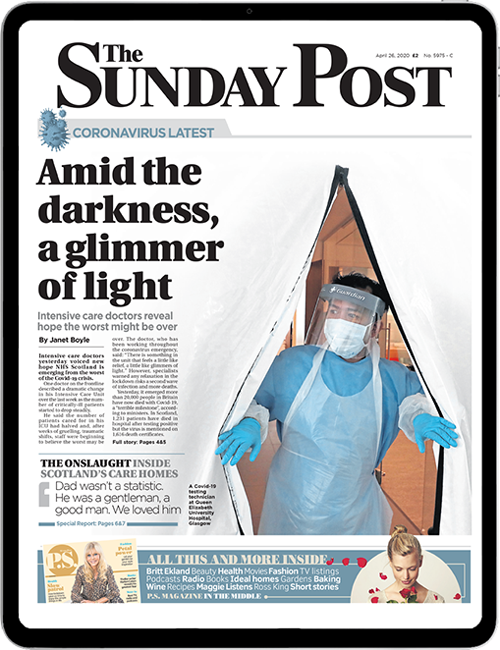
Enjoy the convenience of having The Sunday Post delivered as a digital ePaper straight to your smartphone, tablet or computer.
Subscribe for only £5.49 a month and enjoy all the benefits of the printed paper as a digital replica.
Subscribe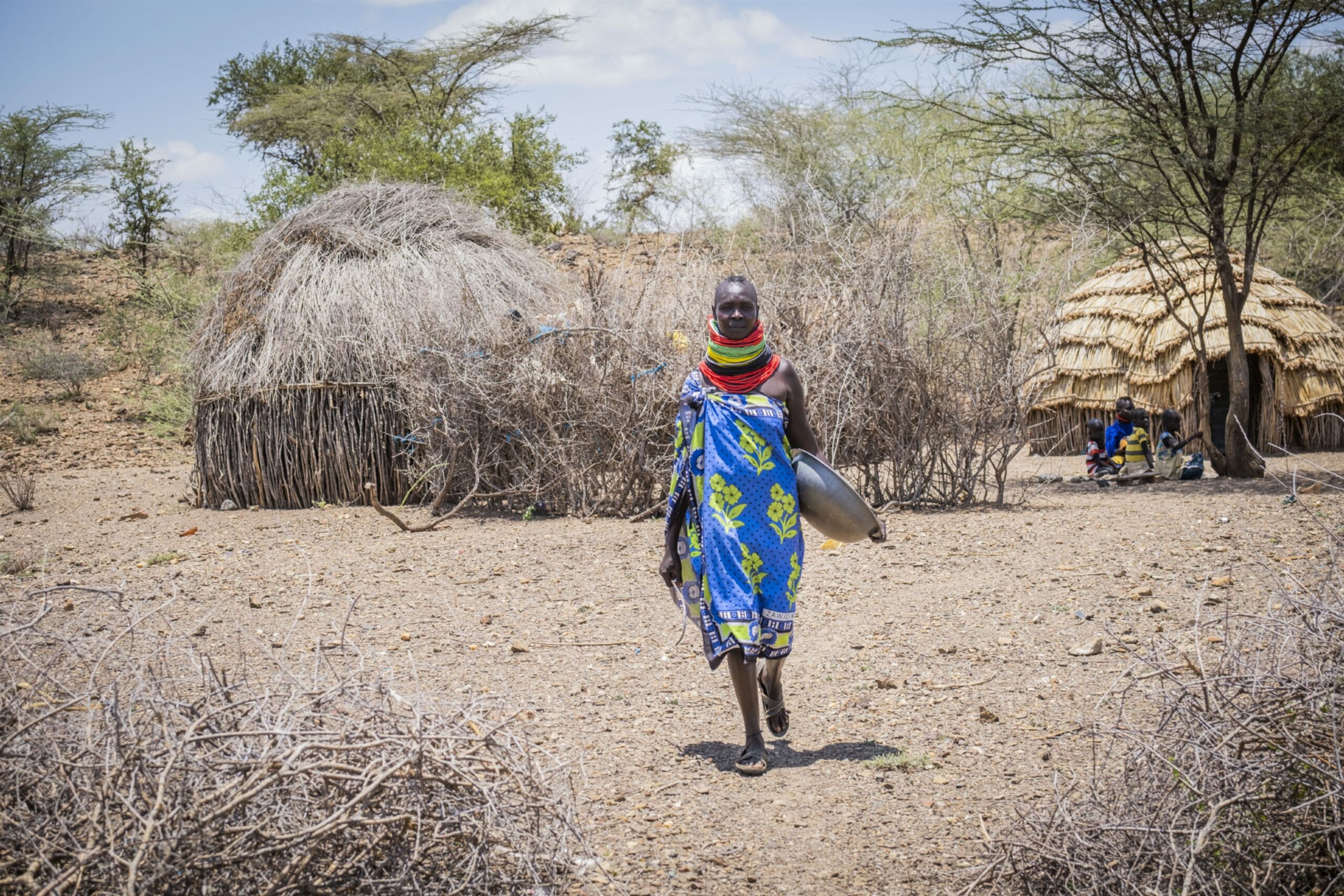 © Chris Watt Photography
© Chris Watt Photography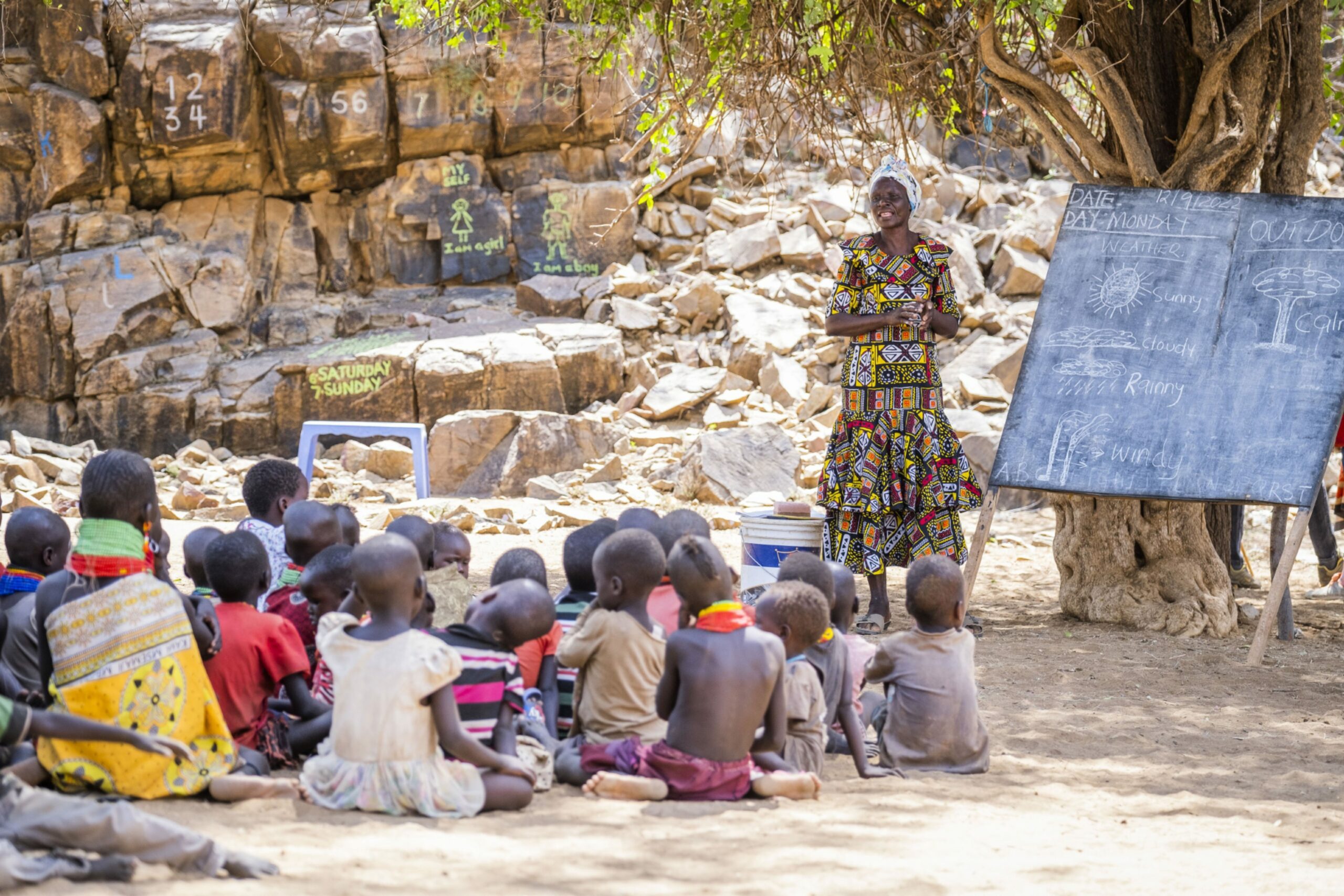 © Chris Watt Photography
© Chris Watt Photography